
Our project proposes the Commons as an alternative settlement system for the Roman Agro, countering the unstructured proliferation of illegal development overtaking its agricultural lands. The proposal lays the groundwork for a new political economy in the region, which ultimately frees localities from their dependence on an inefficient, underfunded state. Instead, we put development directly into the hands of community members.
Spring 2018
Advanced Studio
Critic
Pier Vittorio Aureli
with Emily Abruzzo
Partner
Azza Abou Alam
Published
Shed No Tears for a Colonial City
Advanced Studio
Critic
Pier Vittorio Aureli
with Emily Abruzzo
Partner
Azza Abou Alam
Published
Shed No Tears for a Colonial City
The Project of Commoning
What we propose is a very radical scenario in which first land, then resources, amenities, and finally living spaces are collectivized, forming a new political economy in the Roman Agro. The project of commoning ultimately capitalizes on the productivity of the agricultural hinterlands to facilitate the shift from a government-based to community-based development system. Starting with the minimal means of reorganizing land ownership in the Agro through the pooling of deeds and crop, the commons proposes a third way between privatized and commercial models of production.
What we propose is a very radical scenario in which first land, then resources, amenities, and finally living spaces are collectivized, forming a new political economy in the Roman Agro. The project of commoning ultimately capitalizes on the productivity of the agricultural hinterlands to facilitate the shift from a government-based to community-based development system. Starting with the minimal means of reorganizing land ownership in the Agro through the pooling of deeds and crop, the commons proposes a third way between privatized and commercial models of production.
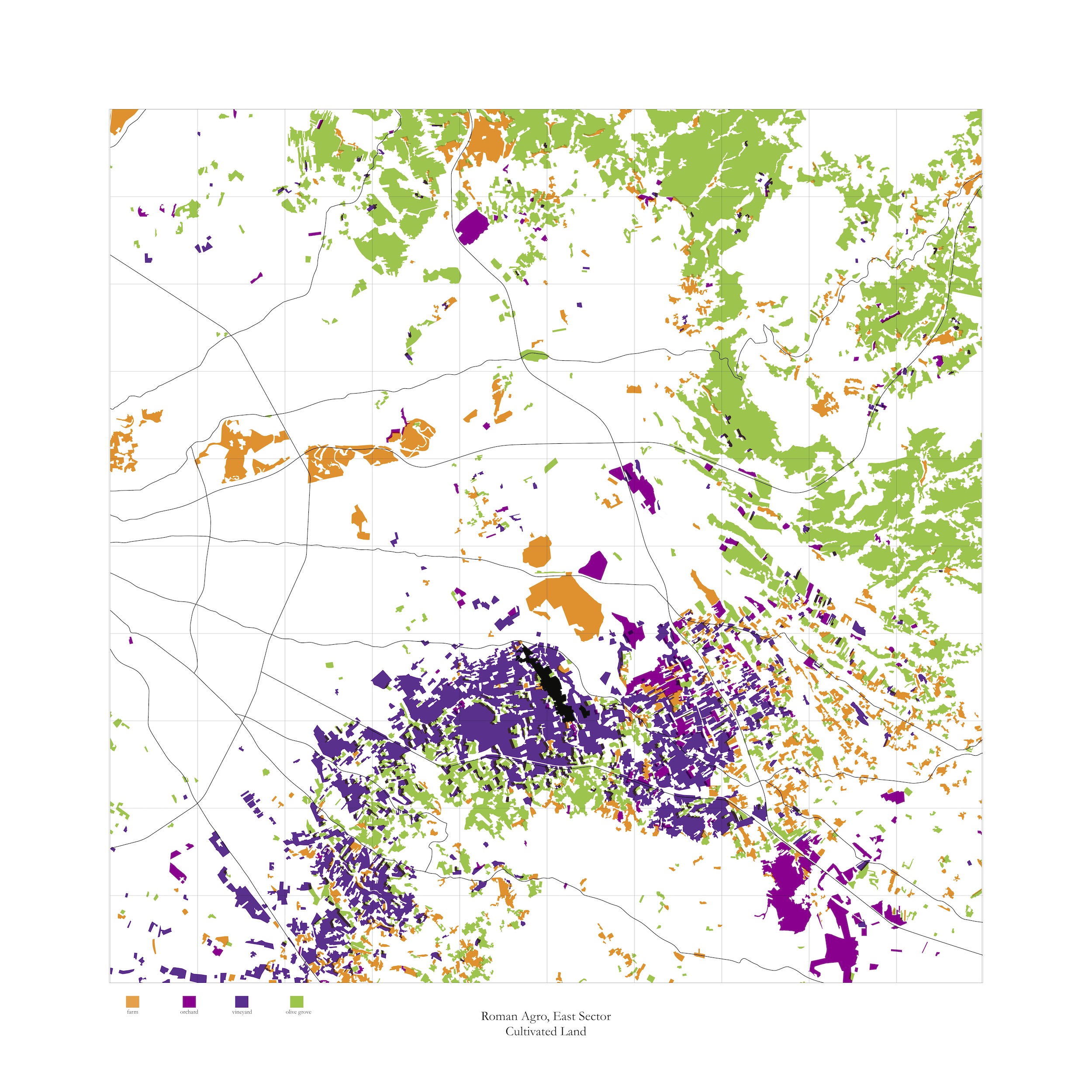
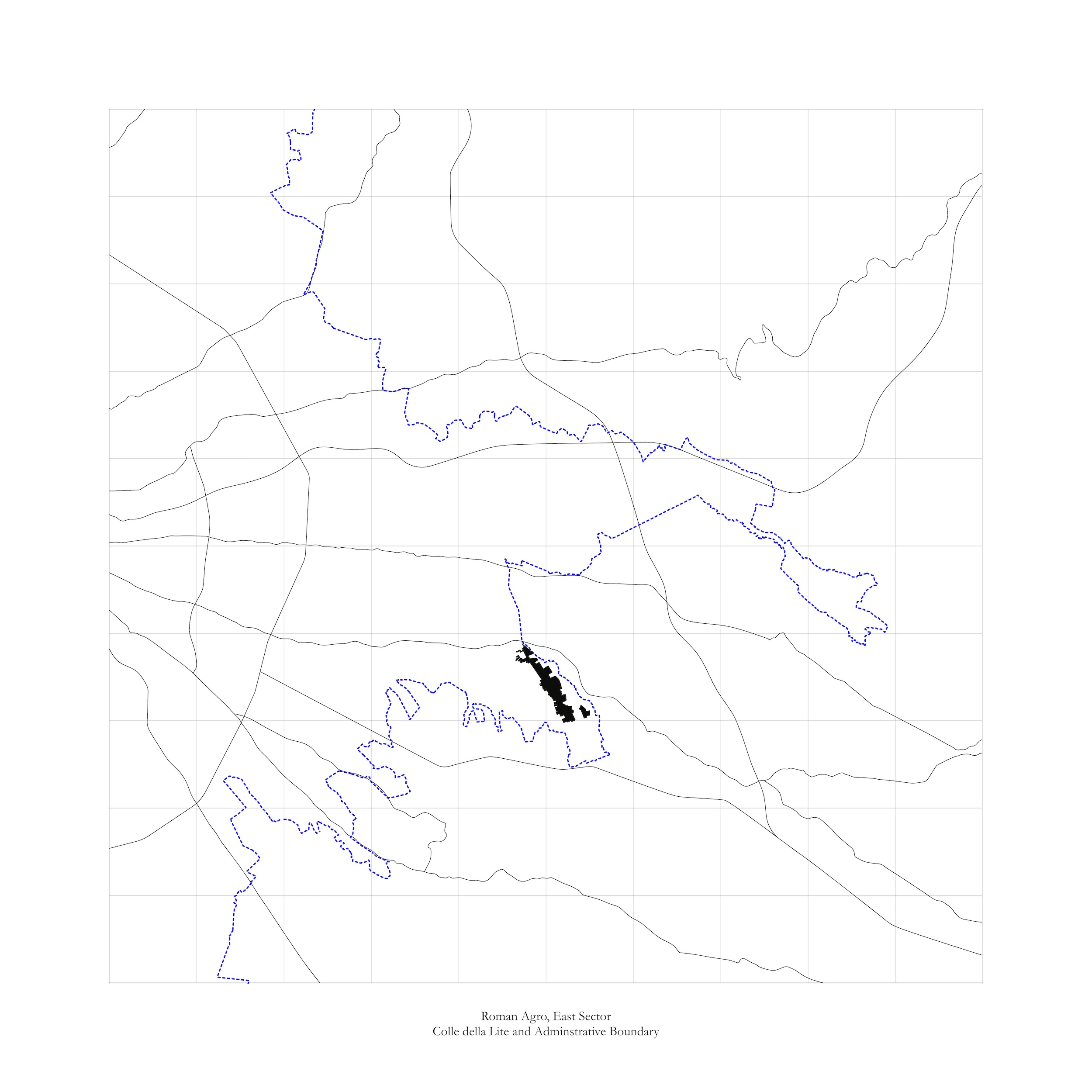


The Site: Colle della Lite
Colle della Lite occupies the very edge of municipal Rome, an area which evades a simple dichotomy of urban versus rural. Situated within a belt of agricultural activity, the region is defined by its patchwork of productive landscapes ranging from the household- to industrial-scale, and by a mix of high- and low-density residential development. Our site is defined to the North and South by public transportation hubs—a subway line terminus to the North, and a regional rail line stop to the South. To the East and West, the site is defined by its topography: the site is an elevated, plateau-like ridge, with drop-offs to the East—the small Fosso dell’Osa stream traces a deep divot in the landscape heres—and is mirrored by an accompanying ridgeline to the West. Colle della Lite is among the youngest of the area’s toponimi. It was recognized by the city of Rome in the 2008 Master Plan, yet no plans have been published since then outlining a strategy for its future (unlike older toponimi in the area). Since the toponimo’s initial recognition 10 years ago, building continues unabated both within and beyond the boundaries originally traced.
Colle della Lite occupies the very edge of municipal Rome, an area which evades a simple dichotomy of urban versus rural. Situated within a belt of agricultural activity, the region is defined by its patchwork of productive landscapes ranging from the household- to industrial-scale, and by a mix of high- and low-density residential development. Our site is defined to the North and South by public transportation hubs—a subway line terminus to the North, and a regional rail line stop to the South. To the East and West, the site is defined by its topography: the site is an elevated, plateau-like ridge, with drop-offs to the East—the small Fosso dell’Osa stream traces a deep divot in the landscape heres—and is mirrored by an accompanying ridgeline to the West. Colle della Lite is among the youngest of the area’s toponimi. It was recognized by the city of Rome in the 2008 Master Plan, yet no plans have been published since then outlining a strategy for its future (unlike older toponimi in the area). Since the toponimo’s initial recognition 10 years ago, building continues unabated both within and beyond the boundaries originally traced.




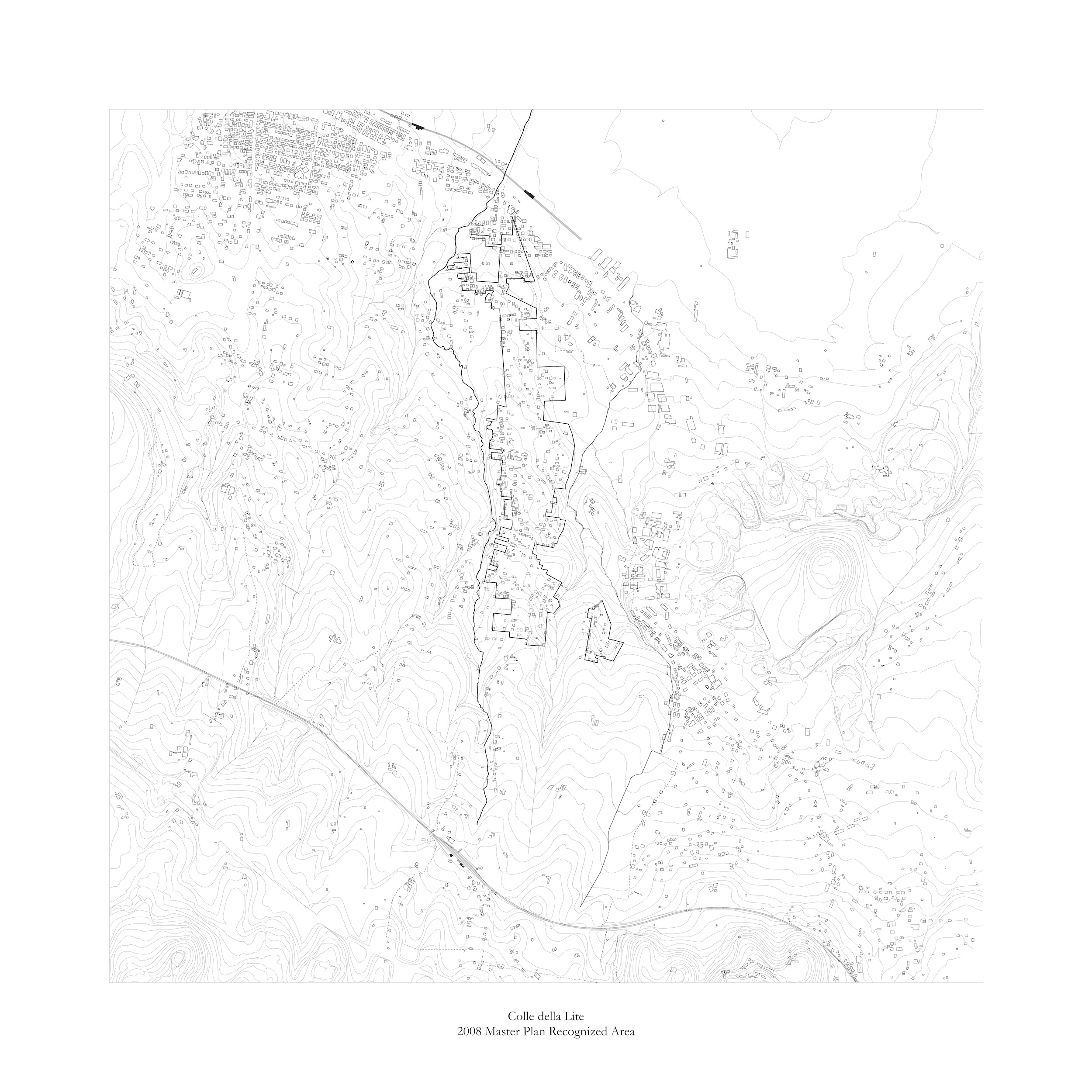
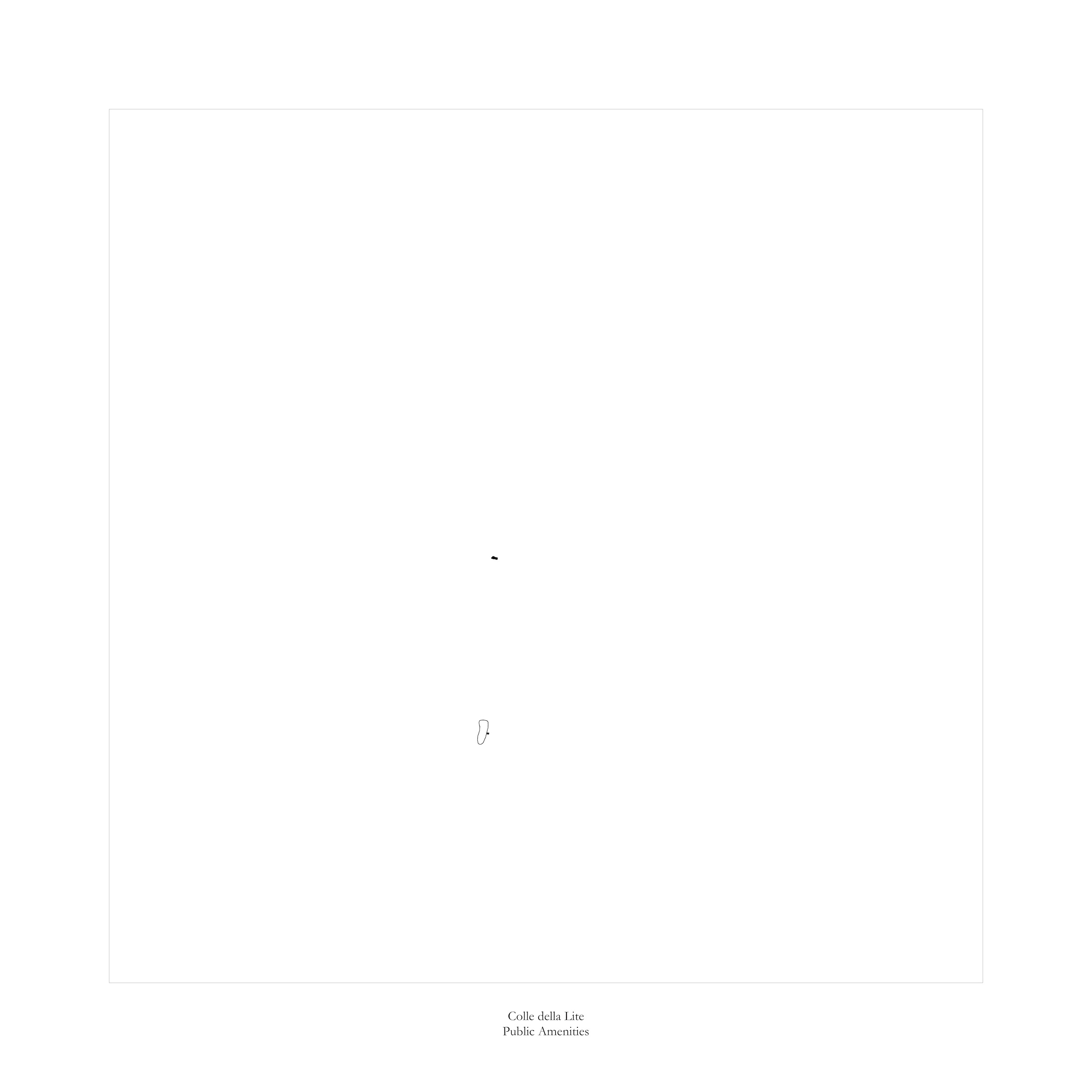


The Problem
Like many other toponimi, the community suffers from an almost complete lack of public space (outside of a sole church, and a small fishing club). Similarly, this site suffers from a lack of civic infrastructure. When present at all, civic gestures are very poorly calibrated. An aerial image shows how bus stops, for example, are strewn along the primary road completely irrespective of the built makeup of the site. Colle della Lite has a decidedly unwelcoming street presence, with fences and low walls abutting the sole, narrow primary street traversing the site. These barriers segregate the properties from the street, but also from one another, creating a heavily siloed condition of the privatized landscape despite the redundant cultivation activities taking place within the lots. Within this toponimo, agriculture comprises mainly industrial scale vineyards associated with commercial wineries, some fruit tree harvesting, and many family-owned olive orchards.
Like many other toponimi, the community suffers from an almost complete lack of public space (outside of a sole church, and a small fishing club). Similarly, this site suffers from a lack of civic infrastructure. When present at all, civic gestures are very poorly calibrated. An aerial image shows how bus stops, for example, are strewn along the primary road completely irrespective of the built makeup of the site. Colle della Lite has a decidedly unwelcoming street presence, with fences and low walls abutting the sole, narrow primary street traversing the site. These barriers segregate the properties from the street, but also from one another, creating a heavily siloed condition of the privatized landscape despite the redundant cultivation activities taking place within the lots. Within this toponimo, agriculture comprises mainly industrial scale vineyards associated with commercial wineries, some fruit tree harvesting, and many family-owned olive orchards.

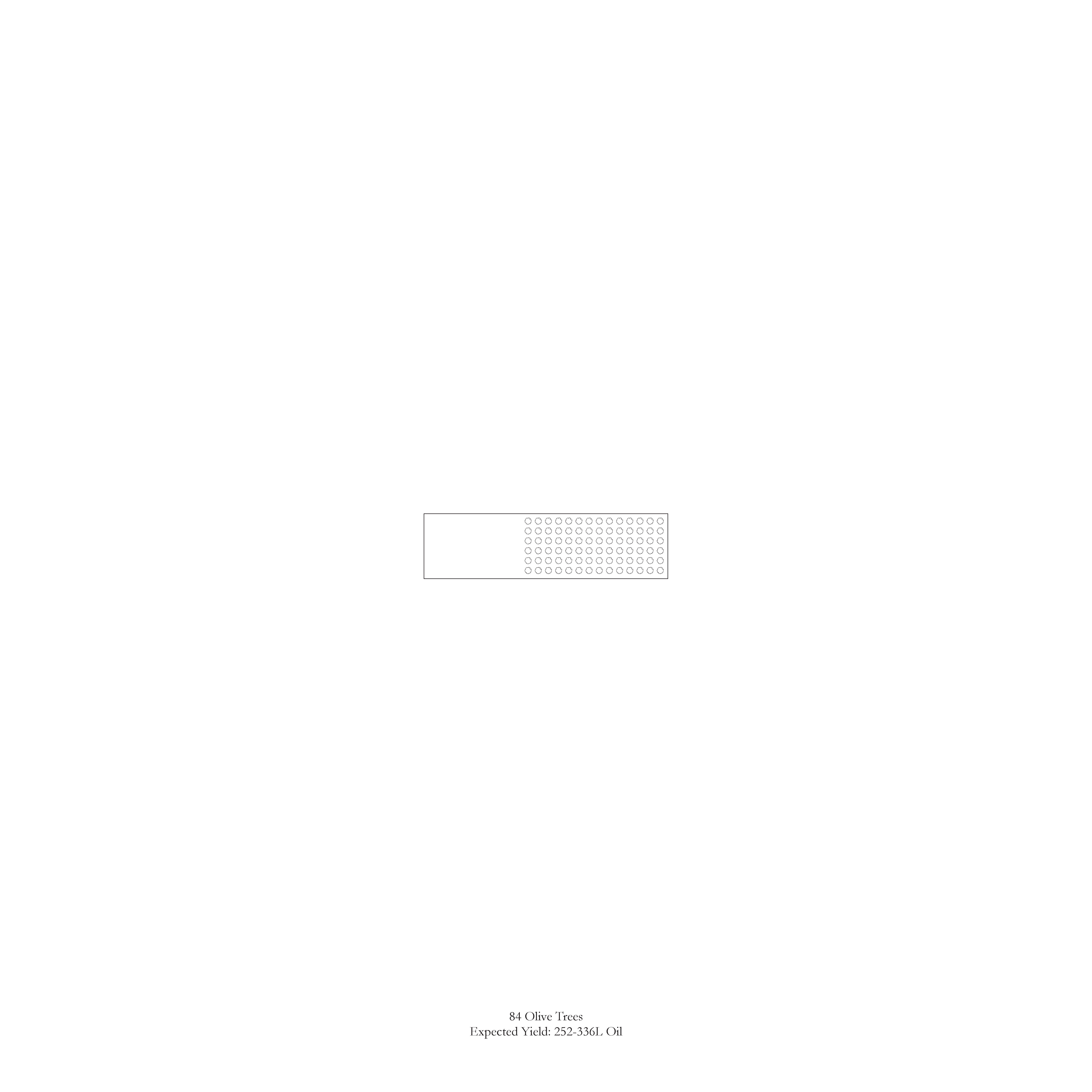

Olive Oil Economics
We became particularly interested in the household production of olive oil, since olive trees are a particularly robust tree type, which require little maintenance outside of the harvest period, yet can bring large returns. For example, on our site, the average lot size is 6000sqm. This translates to roughly 85 olive trees for a lot between ½ and ⅔ planted, which in a harvest year can yield between 252-336L of olive oil. Or 500-675 500ml bottles (like one would purchase at a market) per year. Despite the potential productivity here, there are many problems with small, privatized production. Producing at this scale has a very high barrier to entry due to the high costs of equipment and maintenance. The activity has little economic viability at this scale. This becomes particularly apparent when considering that the household scale of production – our 6000sqm lots – active on the site is but a fraction of the size of the average Italian farm, and an order of magnitude smaller than the average Italian industrial farm. Yet, by pooling the productive lands, the untapped economic potential offered by the site becomes clear: three neighbors deciding to pool their crop can fill over 2,000 bottles of olive oil in just one season, hinting at the latent possibilities here to form a commoned enterprise to create a steady stream of income directly for the benefit of community members.
We became particularly interested in the household production of olive oil, since olive trees are a particularly robust tree type, which require little maintenance outside of the harvest period, yet can bring large returns. For example, on our site, the average lot size is 6000sqm. This translates to roughly 85 olive trees for a lot between ½ and ⅔ planted, which in a harvest year can yield between 252-336L of olive oil. Or 500-675 500ml bottles (like one would purchase at a market) per year. Despite the potential productivity here, there are many problems with small, privatized production. Producing at this scale has a very high barrier to entry due to the high costs of equipment and maintenance. The activity has little economic viability at this scale. This becomes particularly apparent when considering that the household scale of production – our 6000sqm lots – active on the site is but a fraction of the size of the average Italian farm, and an order of magnitude smaller than the average Italian industrial farm. Yet, by pooling the productive lands, the untapped economic potential offered by the site becomes clear: three neighbors deciding to pool their crop can fill over 2,000 bottles of olive oil in just one season, hinting at the latent possibilities here to form a commoned enterprise to create a steady stream of income directly for the benefit of community members.
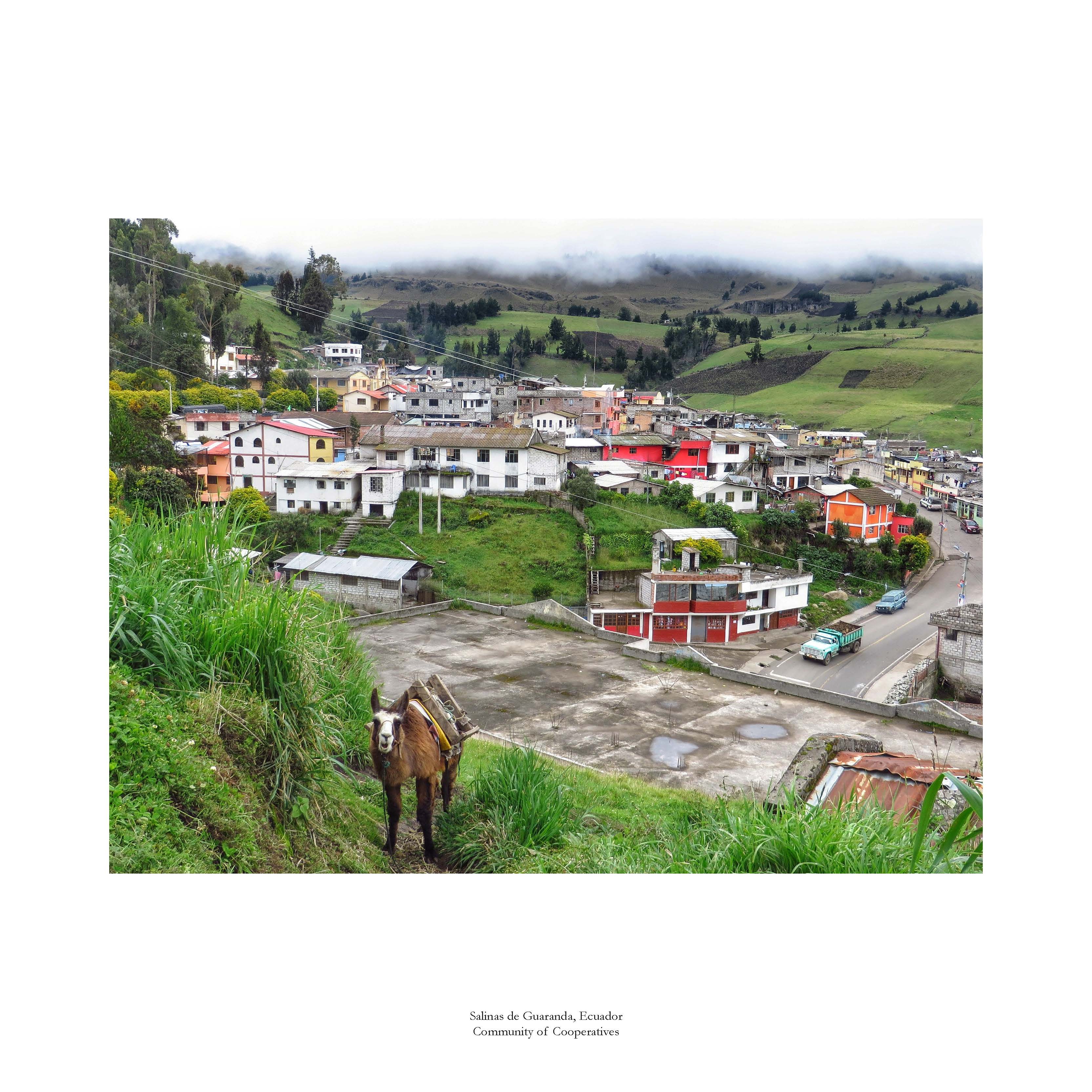
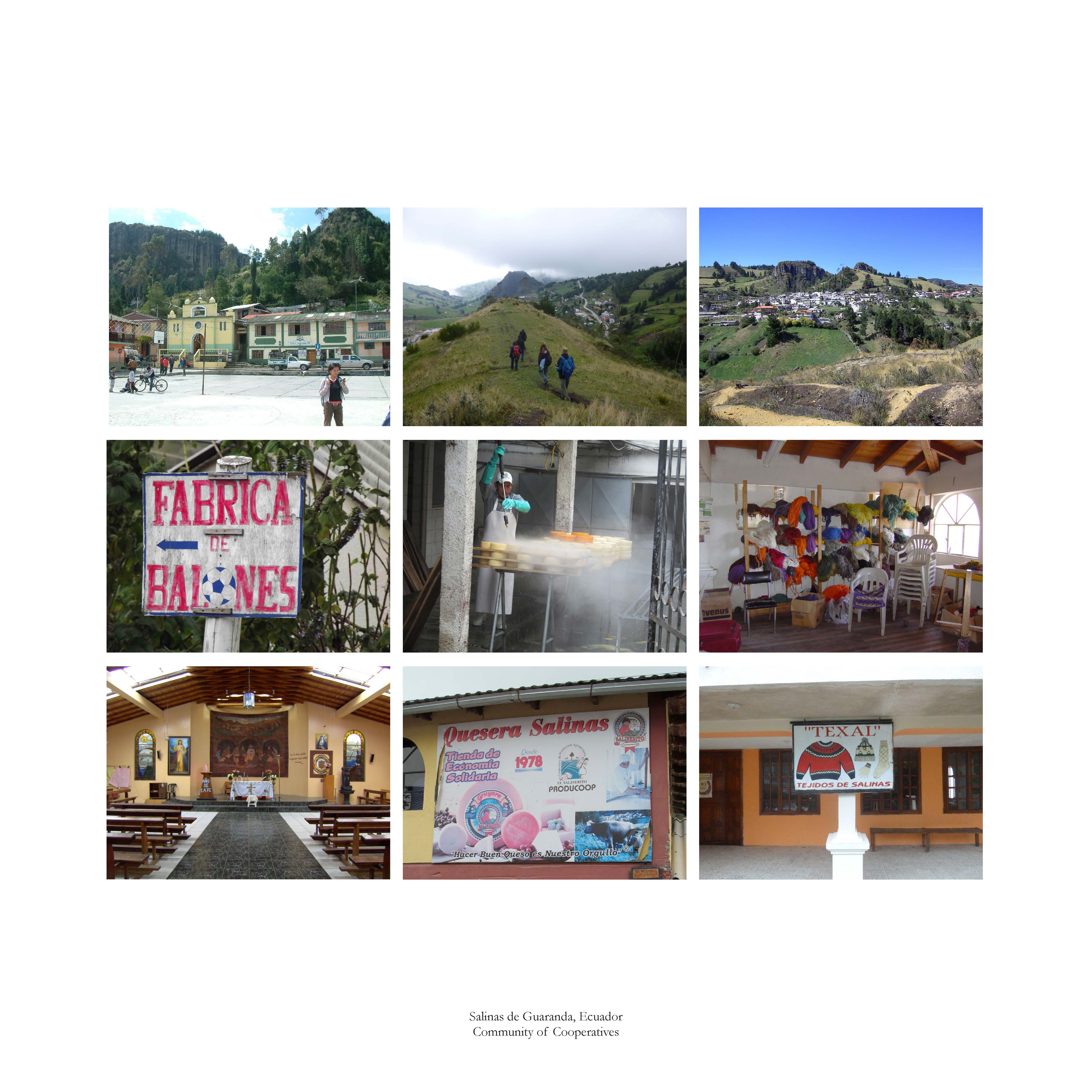
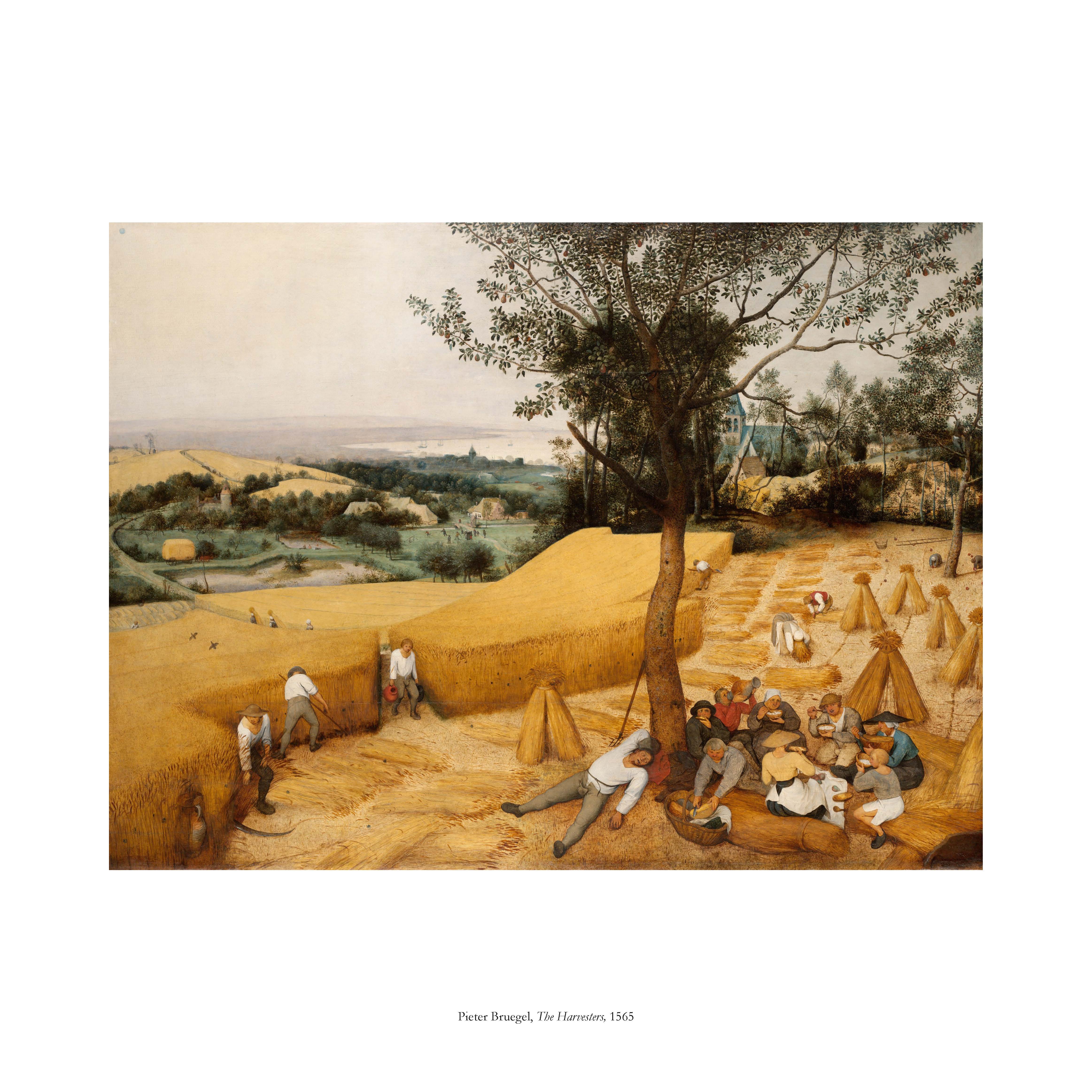

Reorganization
Though culminating in a radical new political economy, commoning is a process that happens gradually, and we can take cues as to the early stages of the process from the community of Salinas de Guaranda, a village of 6,000 nestled in the Andean foothills of rural Ecuador. The lands in this area were owned by a single landowner, who employed the locals for miserable wages until the 1970s, when the locals formed a credit cooperative to buy the lands from the owner. Since then, the area has been owned and managed collectively, and is now a thriving organization composed of various cooperatives. The cooperatives sell their products (including cheese, chocolate, wool, mushrooms) under the joint name Salinerito. Profits are reinvested to the cooperative companies and used for the support of the developing communities. Following the model of the cooperative, but ultimately surpassing it, what we aim to evoke harkens back to the mode of agrarian living prior to the enclosure movement of the 16th century. One that is famously depicted in Pieter Bruegel’s genre paintings, illustrating scenes of daily life in the flemish countryside prior to the privatizations of the land. What we see in the paintings is a vibrant and supportive community before the lands it dwells in ceased to be common land for communal use.
Though culminating in a radical new political economy, commoning is a process that happens gradually, and we can take cues as to the early stages of the process from the community of Salinas de Guaranda, a village of 6,000 nestled in the Andean foothills of rural Ecuador. The lands in this area were owned by a single landowner, who employed the locals for miserable wages until the 1970s, when the locals formed a credit cooperative to buy the lands from the owner. Since then, the area has been owned and managed collectively, and is now a thriving organization composed of various cooperatives. The cooperatives sell their products (including cheese, chocolate, wool, mushrooms) under the joint name Salinerito. Profits are reinvested to the cooperative companies and used for the support of the developing communities. Following the model of the cooperative, but ultimately surpassing it, what we aim to evoke harkens back to the mode of agrarian living prior to the enclosure movement of the 16th century. One that is famously depicted in Pieter Bruegel’s genre paintings, illustrating scenes of daily life in the flemish countryside prior to the privatizations of the land. What we see in the paintings is a vibrant and supportive community before the lands it dwells in ceased to be common land for communal use.



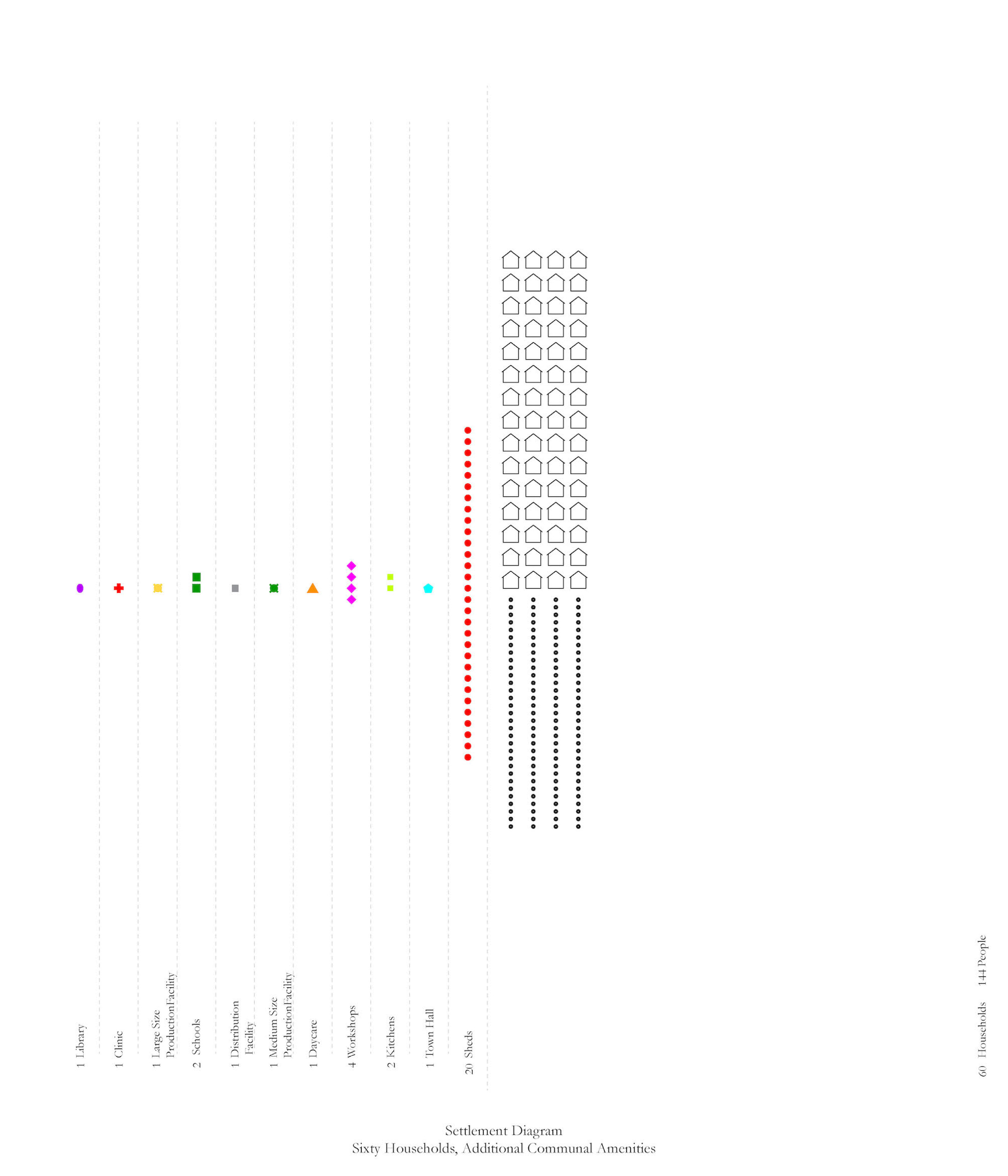



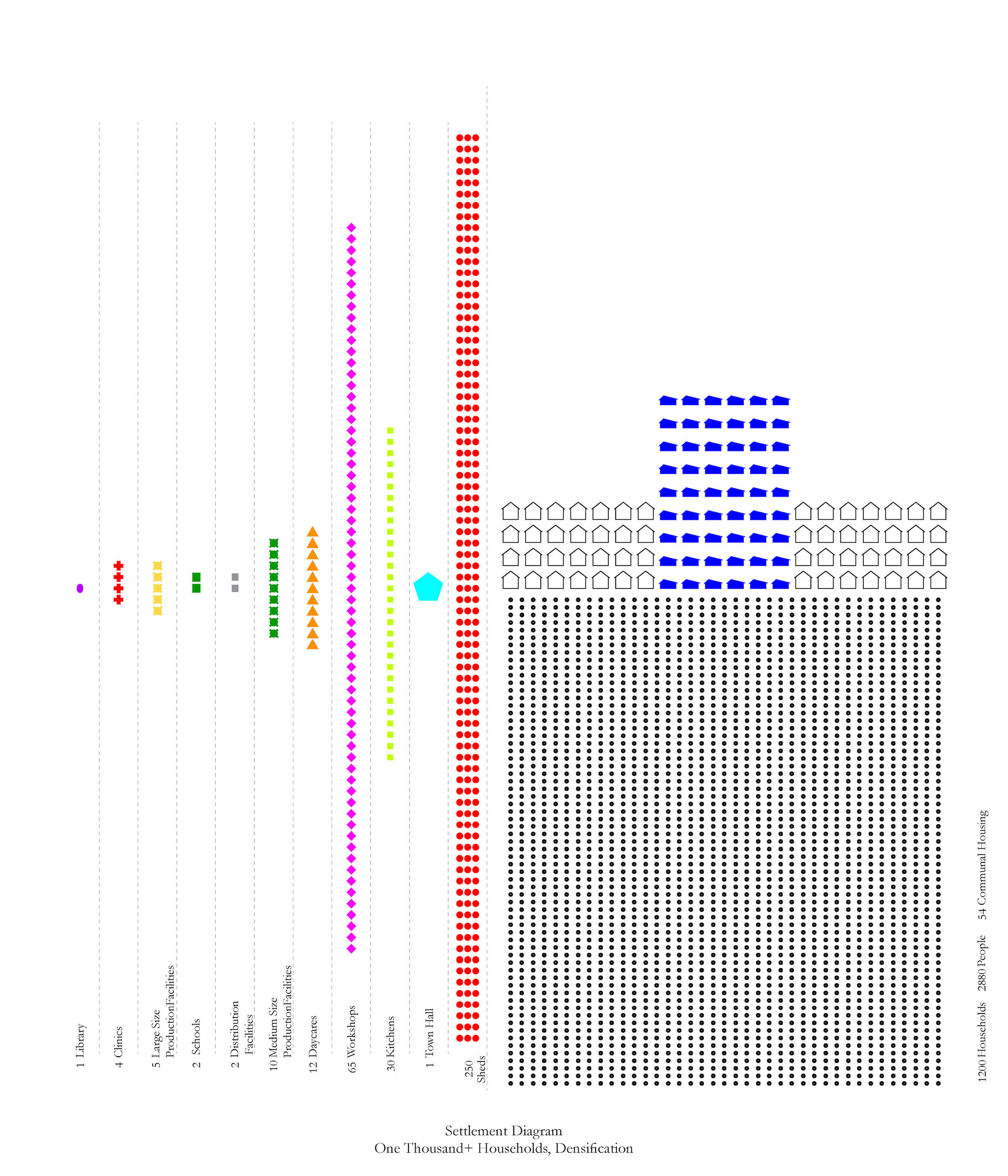

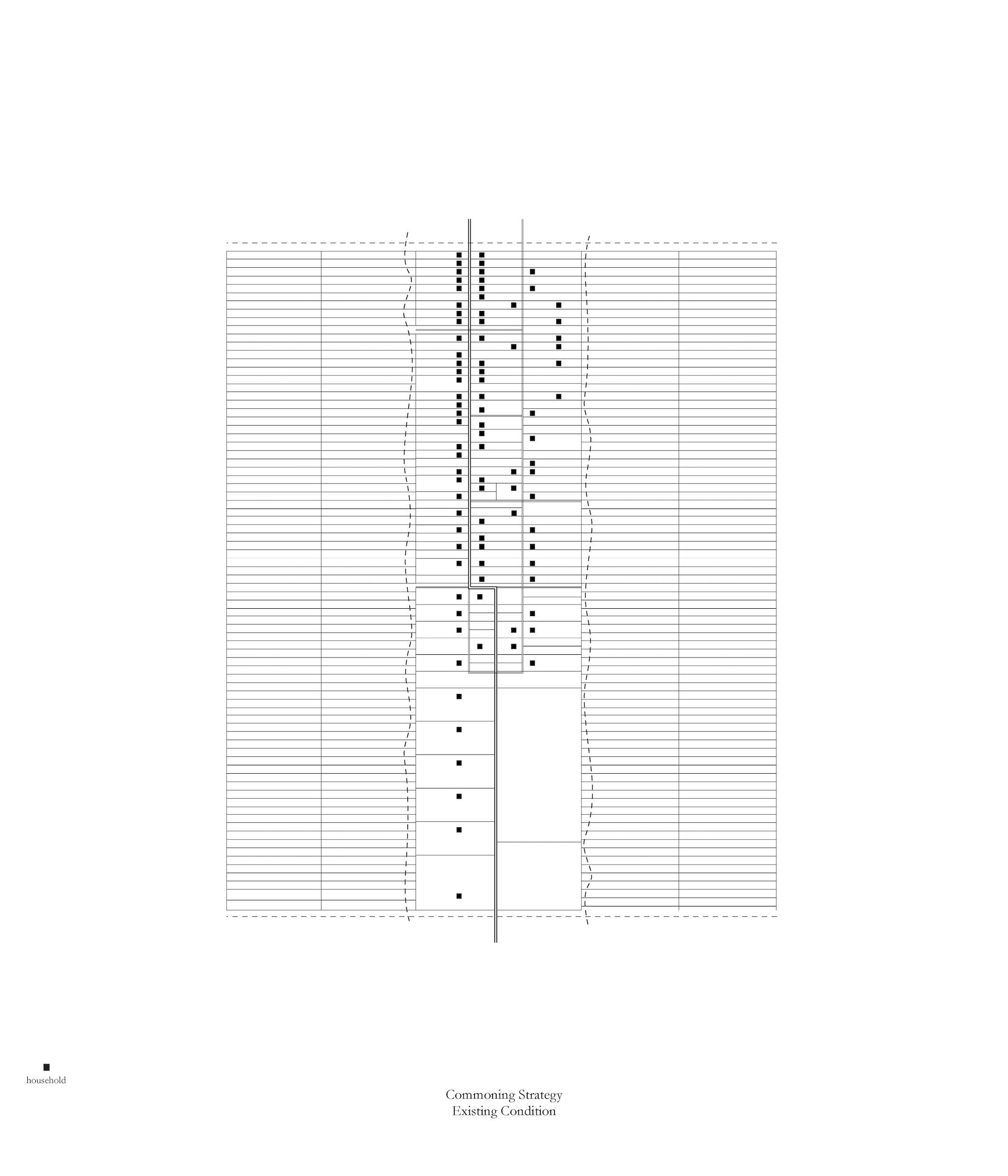




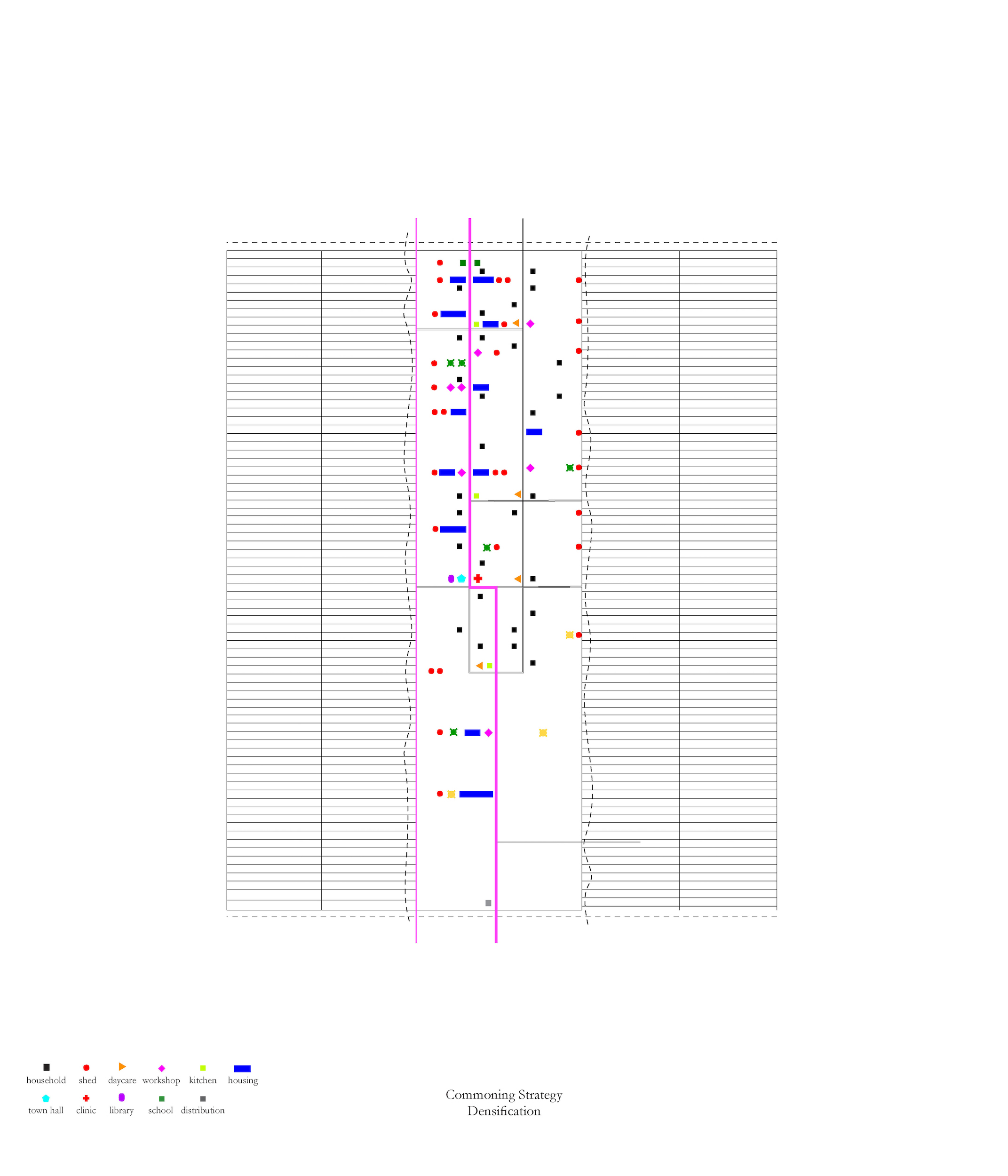
Urban Strategy
Our strategy begins with a simple shed shared between three households who have agreed to share resources for olive oil production. As more households join by pooling deeds and resources, the new community grows, and new programs are added periodically to reflect new needs such as child care. Eventually the settlement builds communal housing. Spatially, the strategy unfolds along the two main N/S axes of the site. Amenities are placed at intersections. Communal housing grows lineraly in the E/W direction and concentrated around the main road.
Our strategy begins with a simple shed shared between three households who have agreed to share resources for olive oil production. As more households join by pooling deeds and resources, the new community grows, and new programs are added periodically to reflect new needs such as child care. Eventually the settlement builds communal housing. Spatially, the strategy unfolds along the two main N/S axes of the site. Amenities are placed at intersections. Communal housing grows lineraly in the E/W direction and concentrated around the main road.




Formal Strategy
Formally, our interventions take cues from Palladian barchesse. These were traditionally designed near or at the flanks of rural villa residences, and featured one aisle for circulation and another for the storage of farm material and harvested goods. Our bar-shaped designs take these as starting point and add a secondary aisle for added circulation.
Formally, our interventions take cues from Palladian barchesse. These were traditionally designed near or at the flanks of rural villa residences, and featured one aisle for circulation and another for the storage of farm material and harvested goods. Our bar-shaped designs take these as starting point and add a secondary aisle for added circulation.
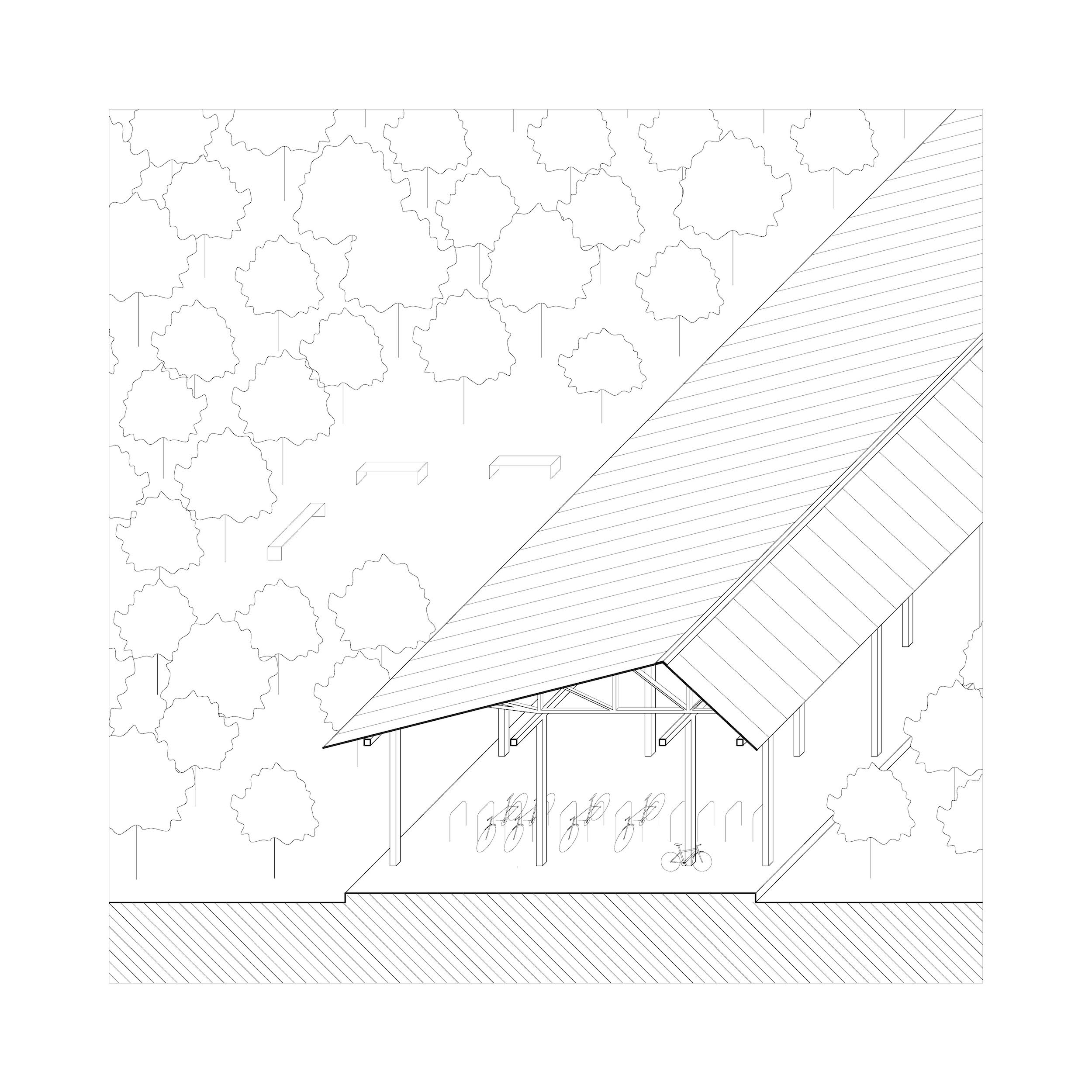






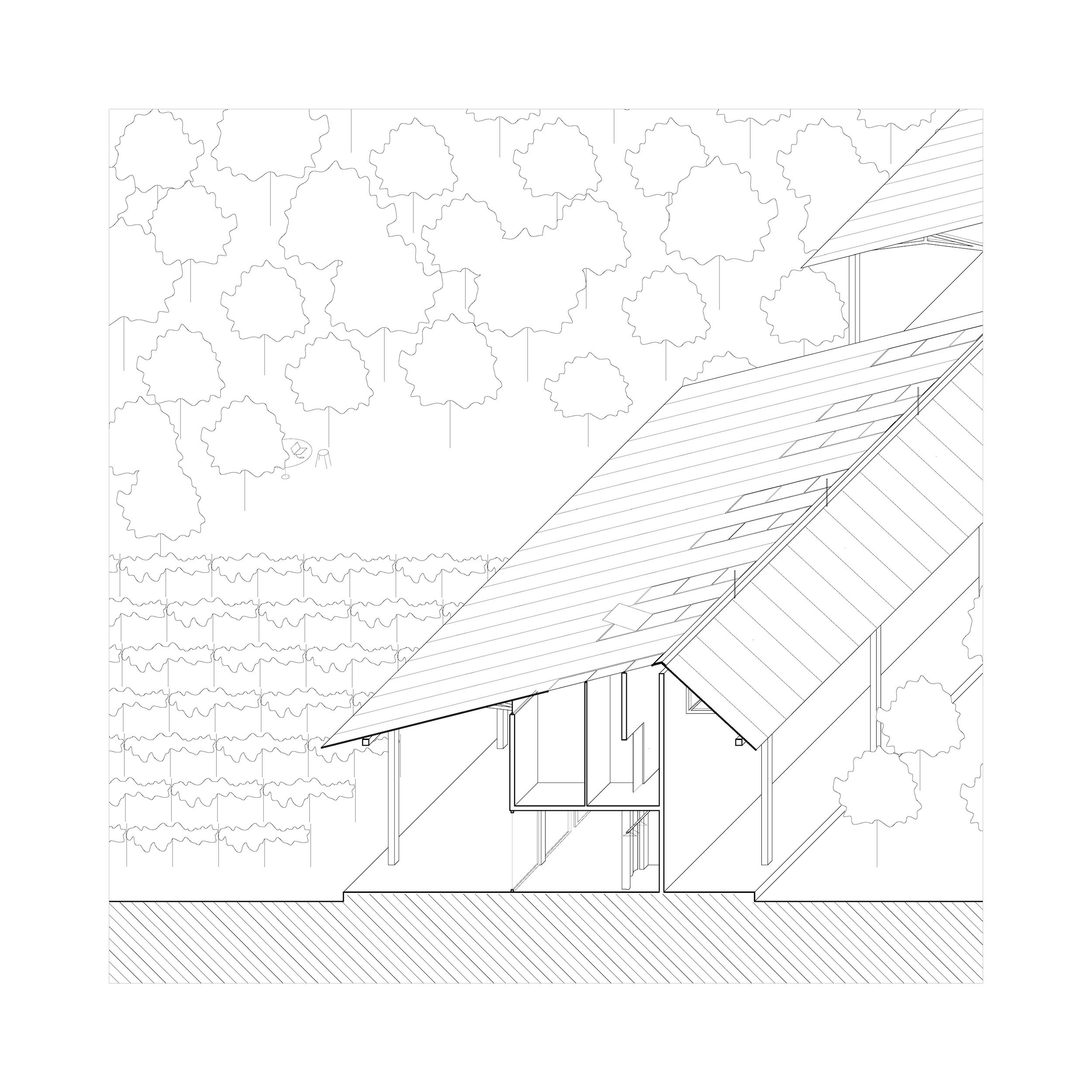
Program
The program and building adapt to one another. The degree of openness/enclosure of the settlement buildings can vary depending on programmatic requirements. We also laid out a set of rules determining what can and cannot adjoin as program – i.e. a daycare cannot abut a (dangerous) workshop space.
The program and building adapt to one another. The degree of openness/enclosure of the settlement buildings can vary depending on programmatic requirements. We also laid out a set of rules determining what can and cannot adjoin as program – i.e. a daycare cannot abut a (dangerous) workshop space.


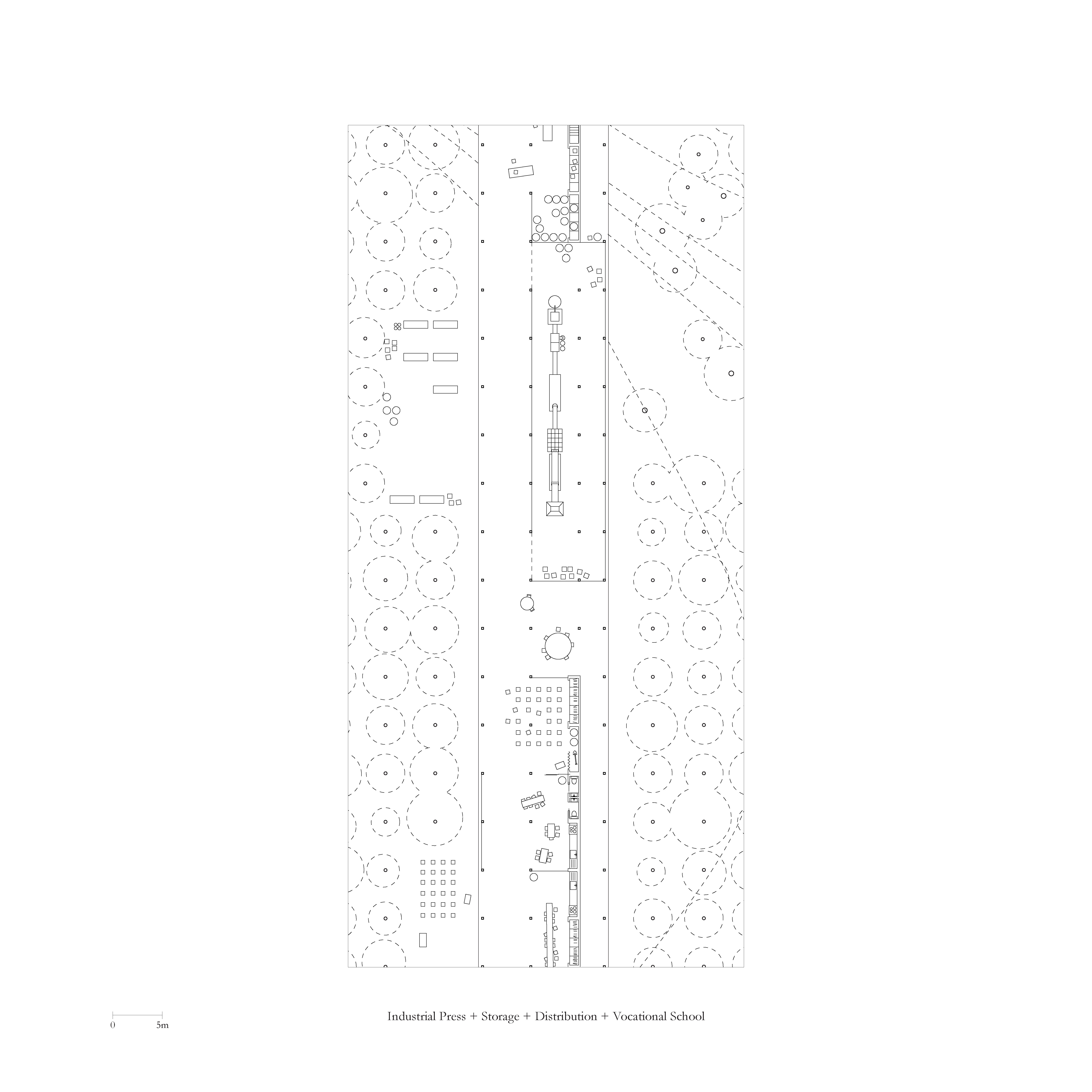

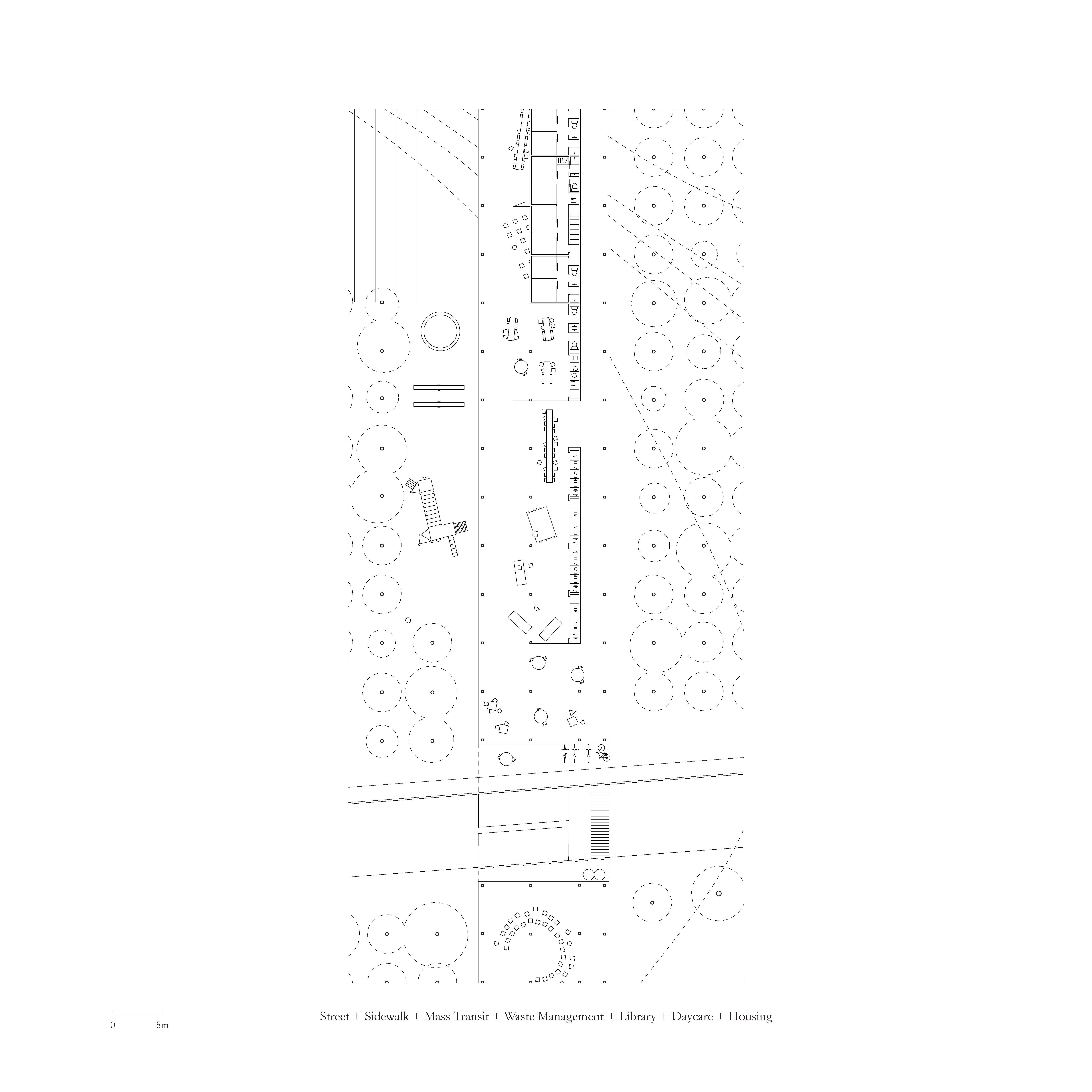
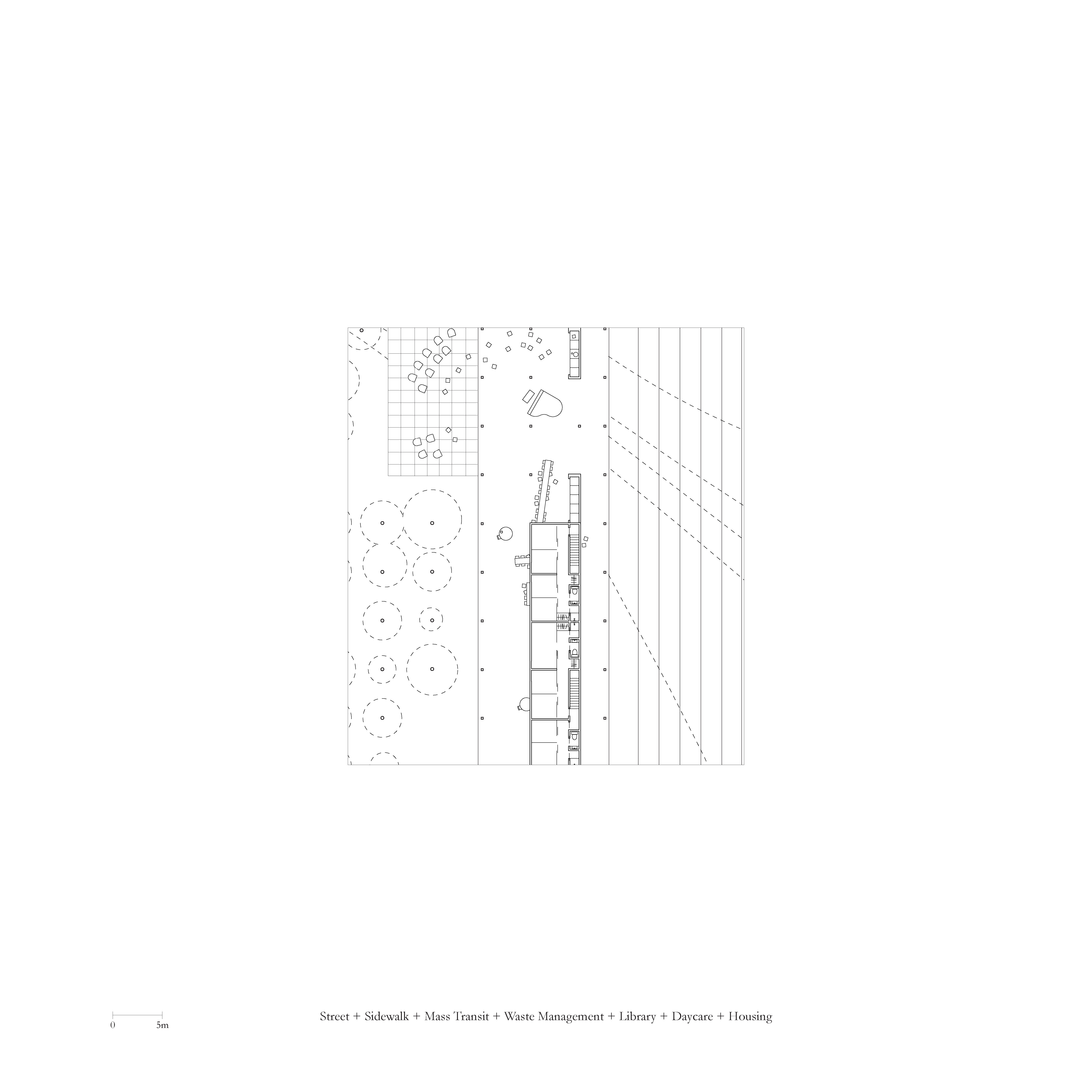


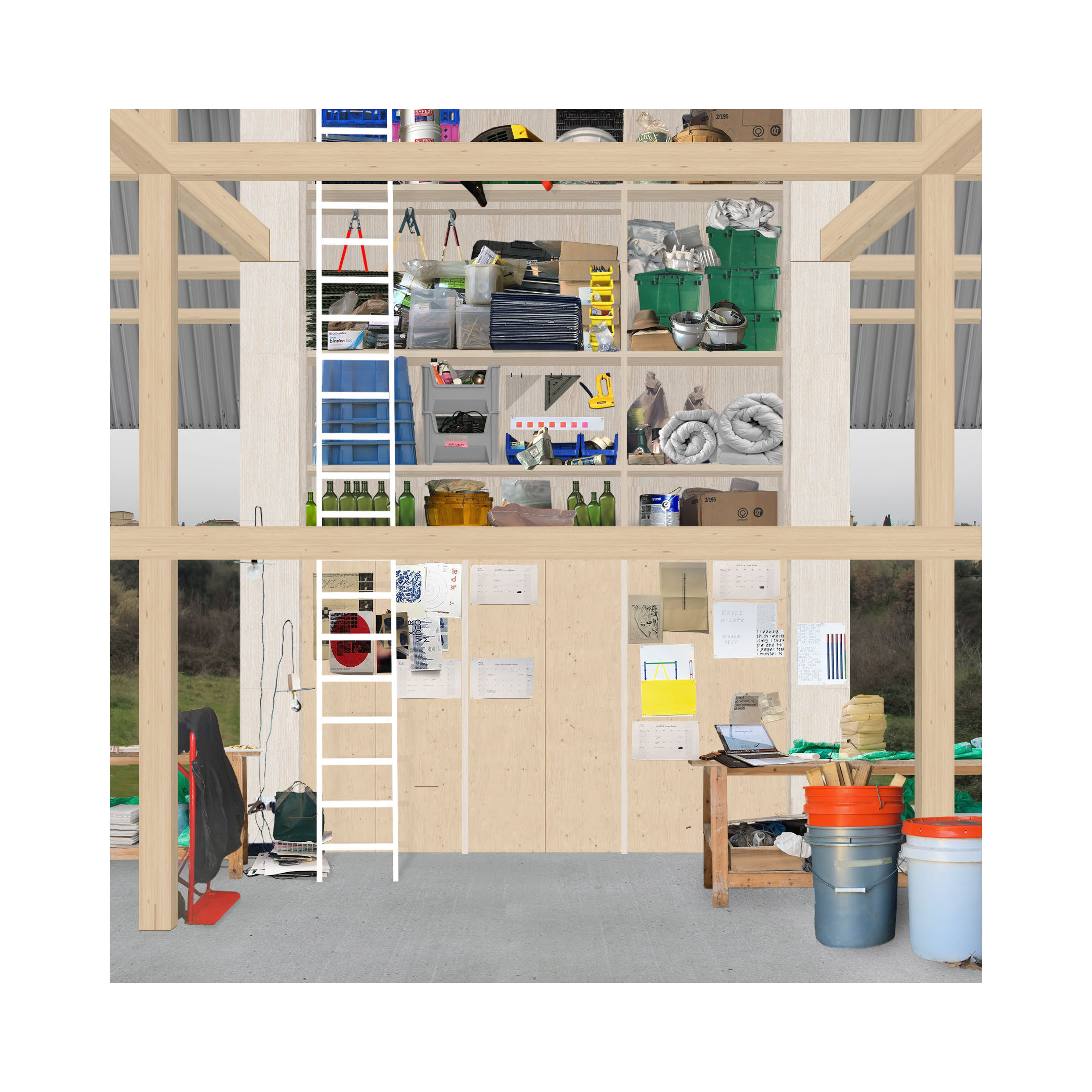

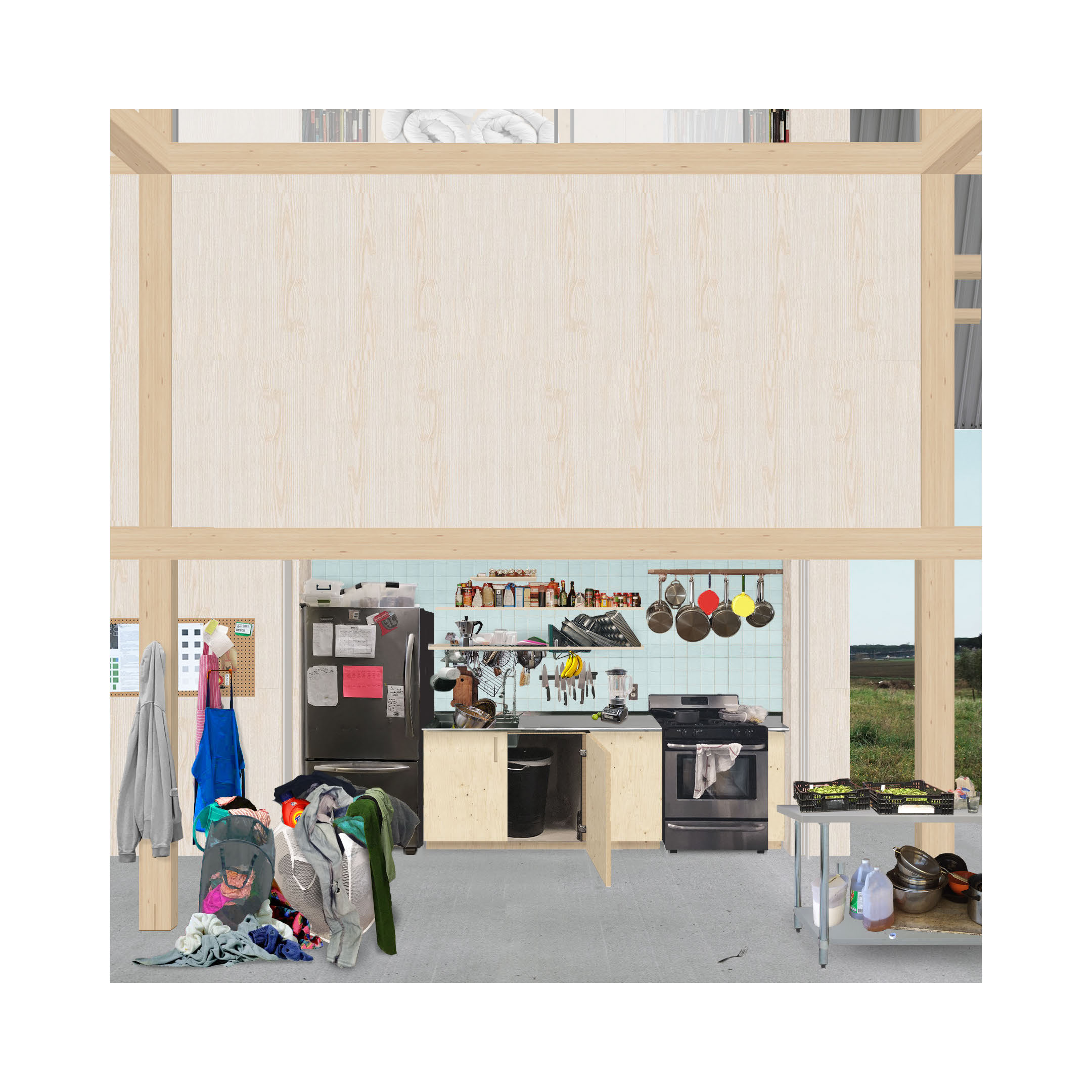
Growth Strategy
Over time the new political economy makes its mark on the landscape in Colle della Lite. As community members take up residence in collective housing, more fields are liberated, and the agricultural hinterland is increasingly reclaimed.
Over time the new political economy makes its mark on the landscape in Colle della Lite. As community members take up residence in collective housing, more fields are liberated, and the agricultural hinterland is increasingly reclaimed.








Application to Colle della Lite
Taking all of this back to the site, the barchesse grow linearly on the site, perpendicular to the main street, following the grain of the orchards, and anchored by the series of public programs and services we’ve been mentioning. Note the densification of foliage, and a new street rhythm.
Taking all of this back to the site, the barchesse grow linearly on the site, perpendicular to the main street, following the grain of the orchards, and anchored by the series of public programs and services we’ve been mentioning. Note the densification of foliage, and a new street rhythm.
Conclusion
In the end, the commons challenges the siloed condition of life, work, and property in this area, proposing instead a gradual transformation in which space and activities are commoned--managed collectively, utilized flexibly, and accommodating of change over time. The system starts with the restructuring of land ownership models from the level of the household, and ultimately facilitates greater autonomy and independence from the state. This is a model with potentially far-reaching application throughout the agrarian agro and beyond.
In the end, the commons challenges the siloed condition of life, work, and property in this area, proposing instead a gradual transformation in which space and activities are commoned--managed collectively, utilized flexibly, and accommodating of change over time. The system starts with the restructuring of land ownership models from the level of the household, and ultimately facilitates greater autonomy and independence from the state. This is a model with potentially far-reaching application throughout the agrarian agro and beyond.